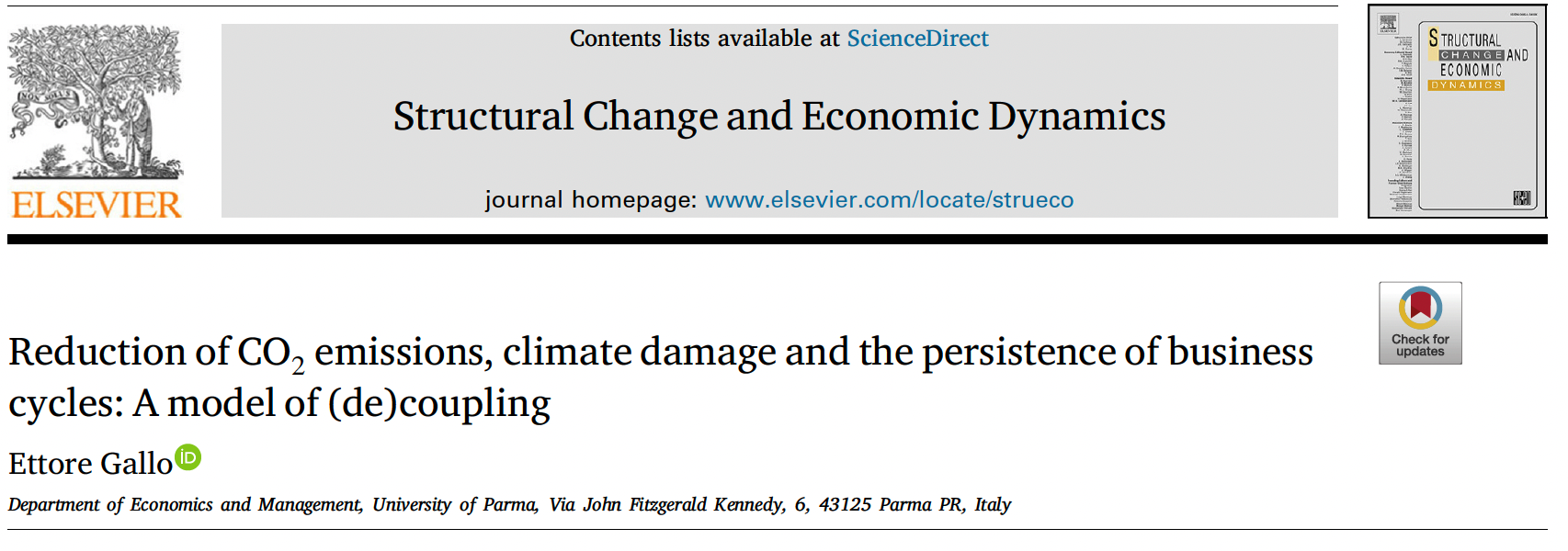New Publication in Structural Change and Economic Dynamics - Reduction of CO2 emissions, climate damage and the persistence of business cycles: A model of (de)coupling

New Publication in Structural Change and Economic Dynamics - Reduction of CO2 emissions, climate damage and the persistence of business cycles: A model of (de)coupling
The paper “Reduction of CO2 emissions, climate damage and the persistence of business cycles: A model of (de)coupling” has been published in the Structural Change and Economic Dynamics .
You can find it (open access) here
Here is the abstract:
The paper develops a theoretical model to examine the effects of transitioning to green investment on business cycle dynamics and CO2 emissions reduction. Building on Goodwin’s (‘The Nonlinear Accelerator and the Persistence of Business Cycles’, Econometrica, pp. 1–17, 1951) endogenous business cycle theory, the paper models the shift from brown to green investment as a logistic diffusion process. This framework captures the short-run procyclicality of emissions while allowing for both coupling and decoupling scenarios between output and emissions over the business cycles. The model demonstrates that the investment channel’s impact on emissions varies depending on the transition’s timing, magnitude, and sensitivity to green–brown investment dynamics. Furthermore, the paper shows that the integration of climate damage can result in milder expansion phases and sharper downturns, potentially offsetting the positive effects of the green transition. The analysis contributes to the understanding of short-run economy-ecology feedback mechanisms, with the model’s flexibility capturing varying degrees of decoupling between emissions and output, thus accommodating scenarios in both advanced economies and emerging markets.
